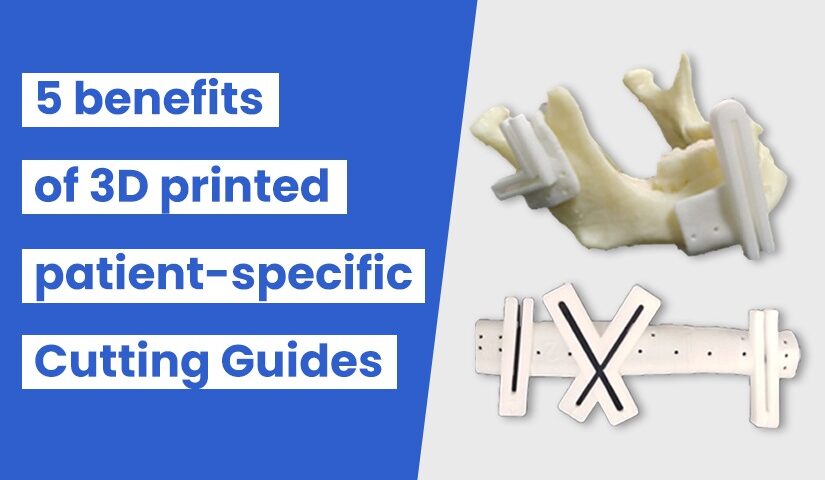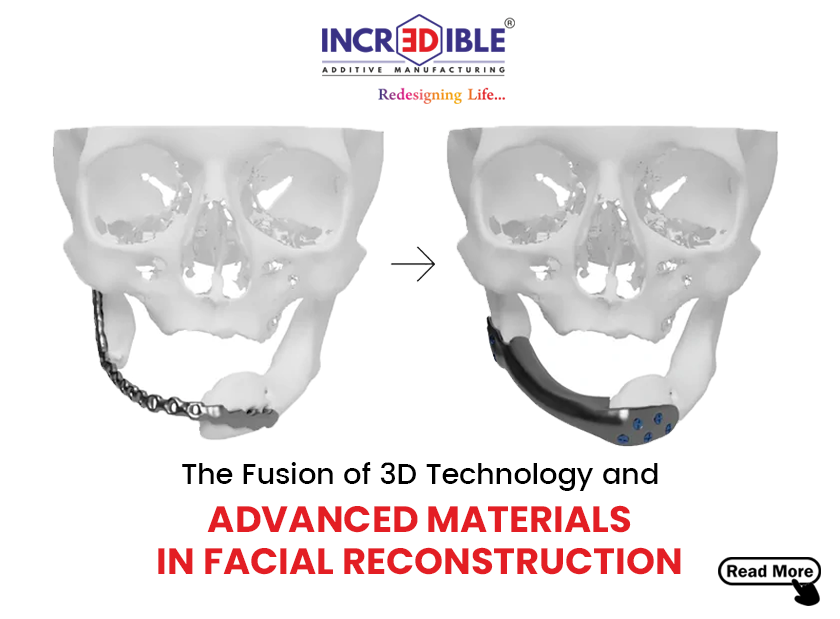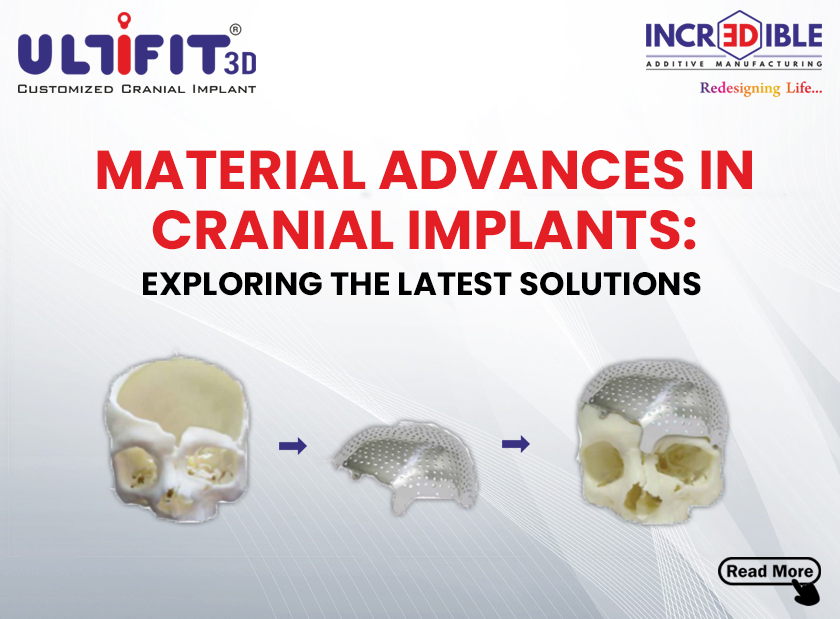5 Benefits of 3D Printed Patient-Specific Cutting Guides
Traditional bone replacement procedures have always had a number of serious drawbacks. One of the most significant issues with surgery is the implant deviating from its original position. The development of computer-aided design and manufacturing technology created a new opportunity for using patient-specific surgical guides to address this issue. These 3D-printed surgical guides offer a precise cut, thereby minimising the drawbacks of surgical techniques, such as fixation challenges. 3D-Printed surgical guides have several benefits for total knee arthroplasty (TKA), pedicle screw placement, mandibular reconstruction, and more.
In this blog, we will learn about the benefits of 3d printed patient-specific guides used in bone surgeries.
Orthopaedic implants need better fixation
Orthopaedic implants are generally used to restore the affected part’s normal functionality in bone or joint. Such restoration requires proper fixation.
The fixation process generally consists of two steps – drilling the screw’s path and fixing the screw in the hole made. Unfortunately, this procedure is frequently associated with a number of negative effects, such as
- Deviation in the screw hole’s drilling trajectory, which occurs when the surgeon drills the hole by hand while having poor visibility through the incision and deviates from the screw’s original intended trajectory
- Using the implant’s curvature to secure the screw would lead to a screw fixation deviation from the intended location because of the implant’s inherent characteristics
- The implanted screw may deviate from its intended position, causing soft tissue damage
Such deviation could lead to inaccuracy in fixation. To overcome the fixation problem, patient-specific cutting guides are now employed in complicated bone surgeries such as TKA, spinal surgeries, dental surgeries, and more.
Benefits of patient-specific surgical guides
Aids in pre-surgical planning: With 3d-printed patient-specific models and surgical guides, surgeons can study the case and get themselves acknowledged with the anatomy of the patient. In case of complications, surgeons prepare themselves in advance. Hence, they are in a better position to handle surgery.
Improved accuracy: 3D-printed patient-specific guides obtained using computer-aided design (CAD) and rapid prototype modelling (RPM) helps in the better fixation of 3d-printed implants. With such guides, fixation showed lesser deviation than the conventional methods.
Reduced operating and recovery time: The majority of cases are studied and understood through 3D-printed patient-specific anatomical models and surgical guides before the actual surgery, so the surgeons are aware of what to do and how to proceed. This planning ahead cuts down on the length of the operation.
Additionally, using 3d-printed patient-specific cutting guides does not make unnecessary cuts. This helps in fast post-surgery recovery.
Eliminates the need for revision surgery: One of the most serious issues with the use of orthopaedic implants is a failure. In these situations, revision surgery is necessary, which is typically more difficult and time-consuming than the initial procedure. Additionally, these revision surgeries come with a number of risks, such as an elevated risk of infection, fractures, and/or perforation of the bone during the removal of the old prosthesis. 3d-printed patient-specific cutting guides help in providing greater precision of the implant positioning and decrease errors and possible risks of failure.
Requires fewer instruments: Since these surgical guides are created using 3d printing technology, it eliminates the use of an expensive and greater number of tools for creating surgical guides. Additional, 3d-printing is a fast process, hence greatly reducing the turn-around time.
Patient-specific surgical guides made by Incredible
Incredible has a cutting-edge facility in Pune, Maharashtra, where it has been serving the needs of the medical industry for more than five years. Modern technology is available in the lab to produce 3D implants, prototypes, and surgical guides.
We start with CT/MRI scans, turn them into 2D CAD models, design the implants using USFDA/CE-approved software, get the surgeon’s okay, build the implants using 3D printing, carry out post-processing operations, and then perform quality control. The step of modifying the models’ and implants’ structural frameworks is entirely eliminated by this process. As a result, 3D printing technology is regarded as the industry’s most accurate process.
Additionally, Incredible AM’s ISO 13485 and 9001 certifications, quality control, seasoned team of medical experts, and quick turnaround time all reflect accuracy in the company’s process. Besides, we also make use of biocompatible materials like Nylon, cobalt chrome, stainless steel, and titanium for creating surgical guides.
With our cutting-edge post-processing tools and 3D metal/plastic printing, the lengthy surgical procedure is significantly shortened to save OT time and help preserve native bone tissues.
Conclusion
Incredible AM Pvt. Ltd. uses additive manufacturing to create fantastic patient-specific surgical guides that can be used for both pre-surgical planning and actual surgery.
If you require surgical guides, contact us.




